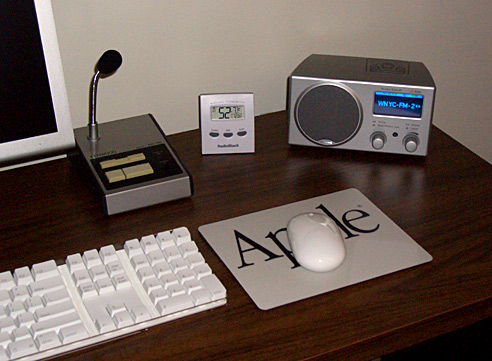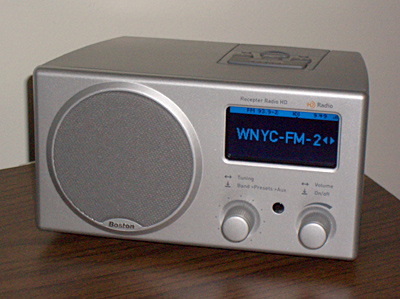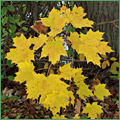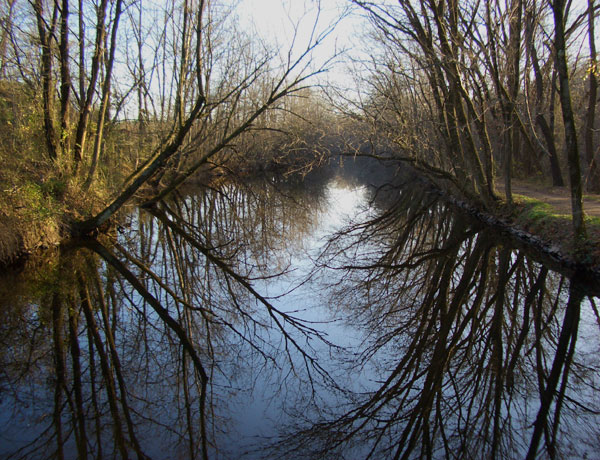Since the beginning of this new blog format, some photographs have been captioned with numerical strings, as above. When copied and pasted into Google Earth or Google Maps, these values take you to a satellite image with an added pointer that identifies objects in the photograph or where I was standing. That still operates.
Beginning today, the procedure has been made much simpler, because the numerals are also a hyperlink. Click, and you will immediately go to the correct Google Map in satellite mode. Try it. I think you will find this very easy, and it will show you quite accurately where the picture was taken, plus provide a map so that you can visit the scene.
Over the holidays, I have been very busy installing the new Macintosh computer system, and all the hardware is now in place. Some of the empty desk space shown in an
earlier photogaph has now been populated with a microphone for the VoIP programs, and an entirely new idea has provided exceptional audio for a laptop computer which, by itself, has only a minimal loudspeaker beneath its keyboard.

I desired amplified speakers, but the simpler kinds intended for computers have always had disappointing hum and noise that a very-quiet MacBook does not mask. So, I selected a trusted-quality radio receiver that includes an auxiliary audio input, and that is now connected to the computer's headphone jack. The result is beautiful stereo sound from an amazingly tiny package. The receiver sits on one end of the credenza, and there is a smaller, matching loudspeaker at the other end.
The bonus is that this Boston Acoustics Recepter Radio HD decodes "HD," which means "hybrid digital" and is the newest technology providing stereo to AM and cleaner sound to FM broadcasting. I shall allow the iBiquity website to explain how HD Radio works, and you can see the receiver for youself at your nearest Radio Shack.

So, how does HD Radio really sound? First of all, any signal sounds only as good as the audio system through which it is reproduced, and the Recepter receiver is exceptional. Its cabinet is only 4x8x7 inches, yet there is base you can feel, and plenty power for a bedroom-size home office. Despite its small size, this is no toy, and it is designed with technical excellence.
HD Radio does require more RF signal than ordinary modes, and I live midway between New York City and Philadelphia, where most of the HD stations are located, and that is 40 miles each direction. Two, local FM stations are easy to decode with a short wire hanging from the receiver, but the rest require an antenna in the attic. Because I already had a coax cable running to the attic, that was not an inconvenience, but I have spent an entire weekend trying to find hot spots in the attic for the FM dipole.
22 HD FM stations are now successfully logged. WOR is the only AM station that I can get to decode, but I can hear four weaker AM signals that identify as HD. It is certainly amazing to hear an AM station offer zero background noise and stereo sound, but the all-talk content is not my preference.
Fortunately, there are five FM stations serving Central New Jersey that offer classical music most of the time, and four are HD. There are also two Christian stations, and the one that has HD offers two multicast channels. For my listening pleasure, HD was well worth any added expense, and I gained a wonderful speaker system for my new computer. I am very pleased.
 Phototelegrapher
Phototelegrapher




